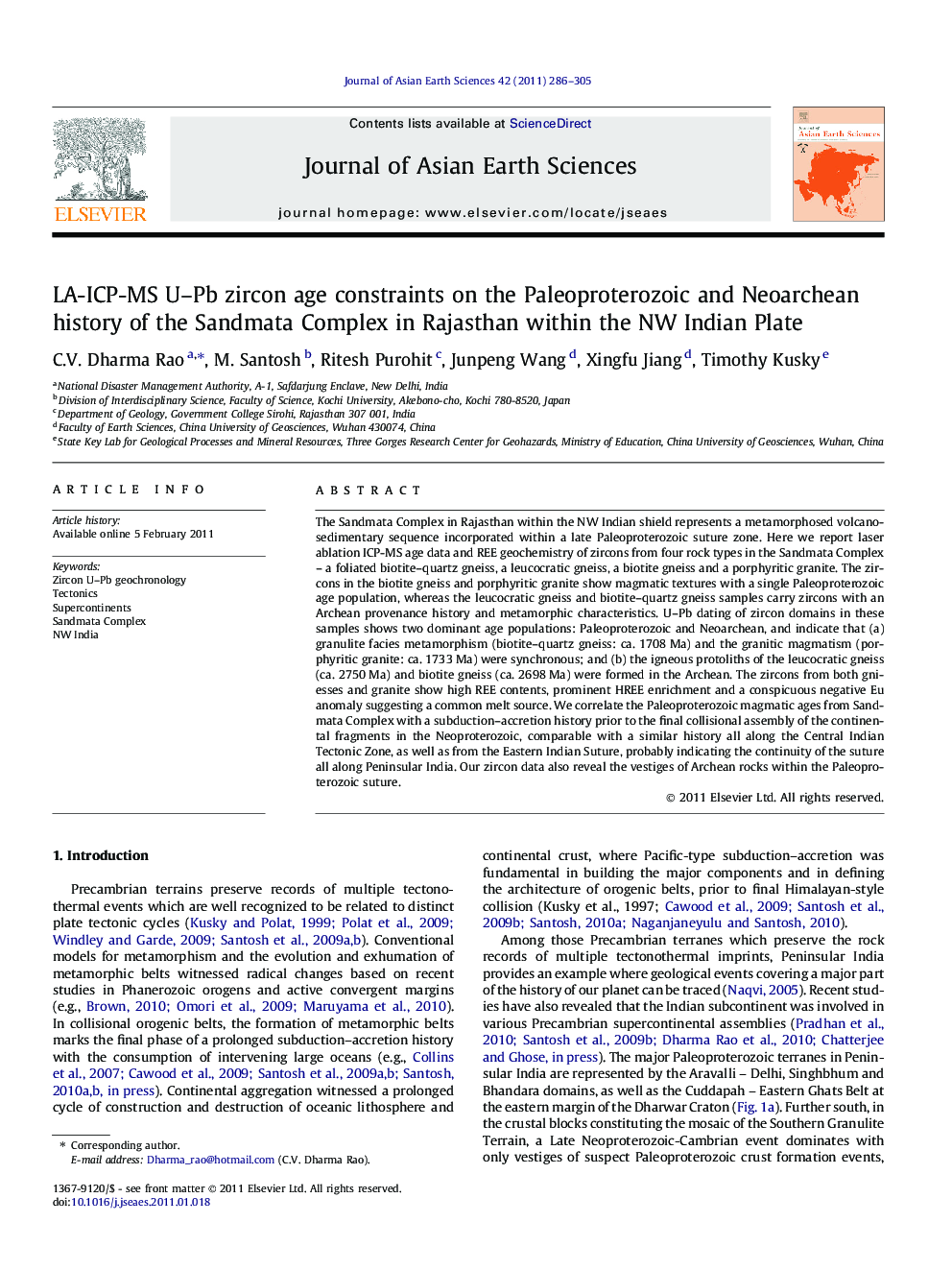| Article ID | Journal | Published Year | Pages | File Type |
|---|---|---|---|---|
| 4731855 | Journal of Asian Earth Sciences | 2011 | 20 Pages |
The Sandmata Complex in Rajasthan within the NW Indian shield represents a metamorphosed volcano-sedimentary sequence incorporated within a late Paleoproterozoic suture zone. Here we report laser ablation ICP-MS age data and REE geochemistry of zircons from four rock types in the Sandmata Complex – a foliated biotite–quartz gneiss, a leucocratic gneiss, a biotite gneiss and a porphyritic granite. The zircons in the biotite gneiss and porphyritic granite show magmatic textures with a single Paleoproterozoic age population, whereas the leucocratic gneiss and biotite–quartz gneiss samples carry zircons with an Archean provenance history and metamorphic characteristics. U–Pb dating of zircon domains in these samples shows two dominant age populations: Paleoproterozoic and Neoarchean, and indicate that (a) granulite facies metamorphism (biotite–quartz gneiss: ca. 1708 Ma) and the granitic magmatism (porphyritic granite: ca. 1733 Ma) were synchronous; and (b) the igneous protoliths of the leucocratic gneiss (ca. 2750 Ma) and biotite gneiss (ca. 2698 Ma) were formed in the Archean. The zircons from both gniesses and granite show high REE contents, prominent HREE enrichment and a conspicuous negative Eu anomaly suggesting a common melt source. We correlate the Paleoproterozoic magmatic ages from Sandmata Complex with a subduction–accretion history prior to the final collisional assembly of the continental fragments in the Neoproterozoic, comparable with a similar history all along the Central Indian Tectonic Zone, as well as from the Eastern Indian Suture, probably indicating the continuity of the suture all along Peninsular India. Our zircon data also reveal the vestiges of Archean rocks within the Paleoproterozoic suture.
Research highlights► Zircon U-Pb dating indicate that the gneisses and granite in the Sandmata complex were emplaced during (1708–1733 Ma) and their protoliths (2750–2698 Ma) were formed in the Archean. ► The zircons show HREE enrichment and a negative Eu anomaly suggesting a common melt source. ►The magmatic ages are correlated with a Paleoproterozoic subduction–accretion history.
